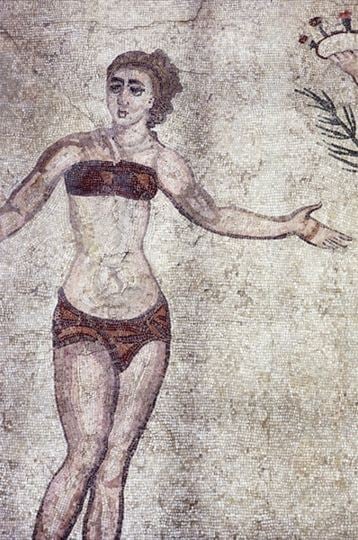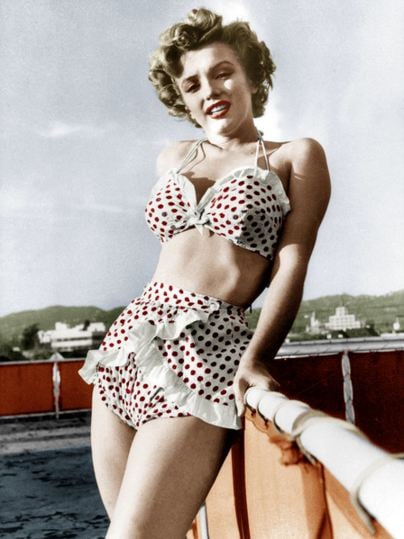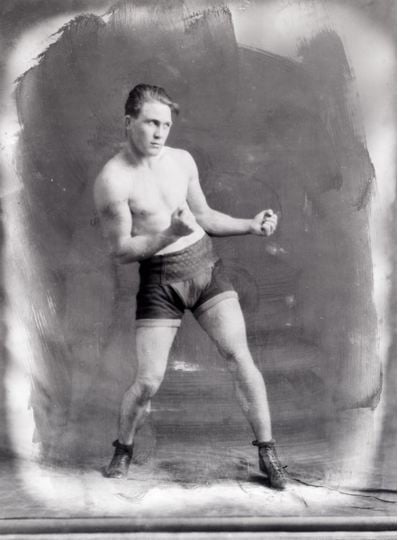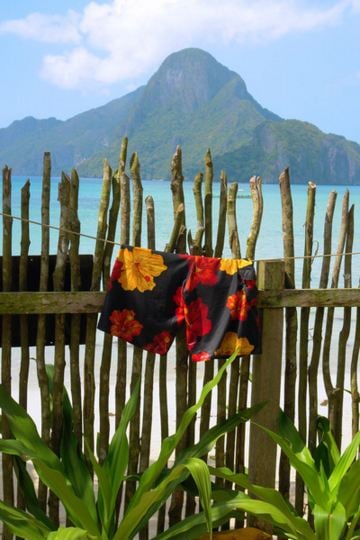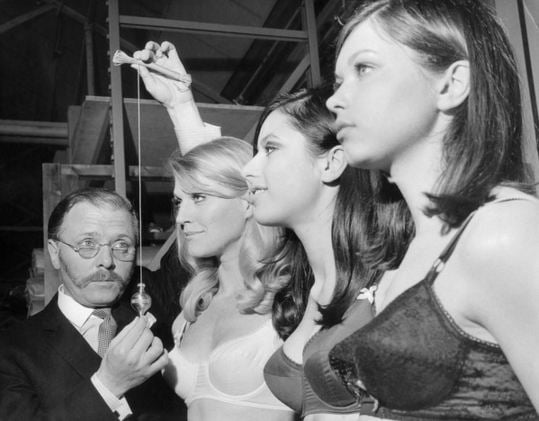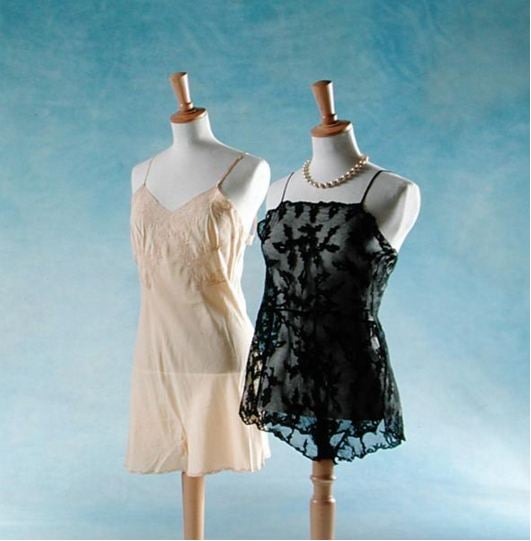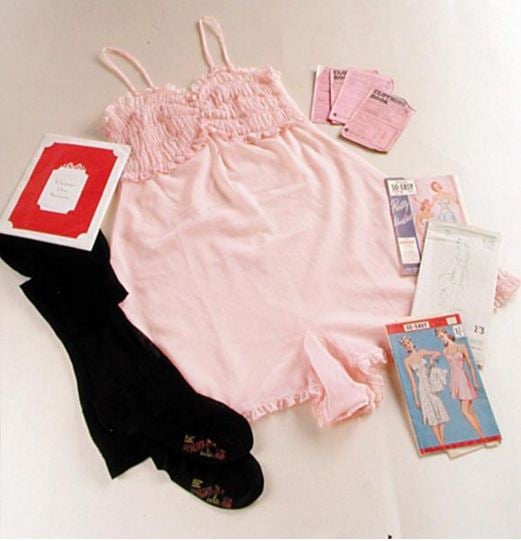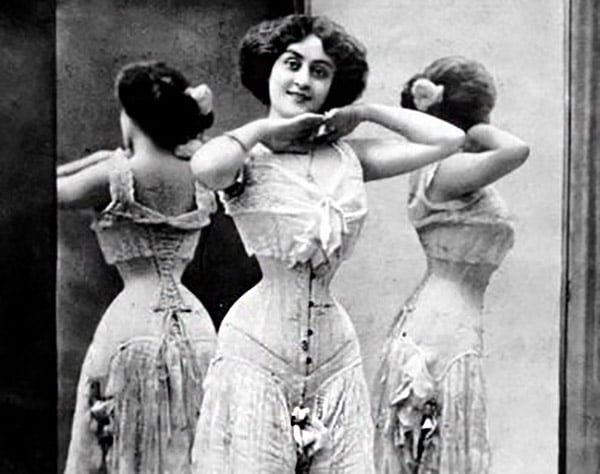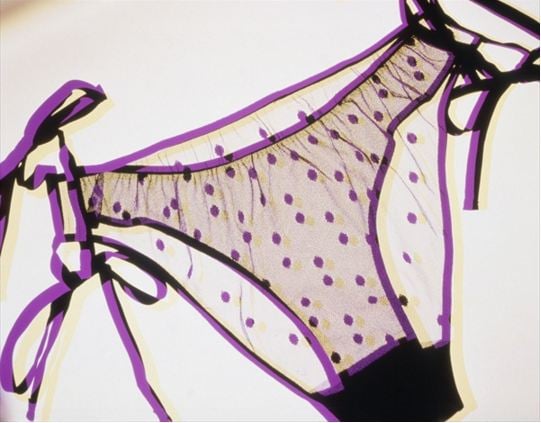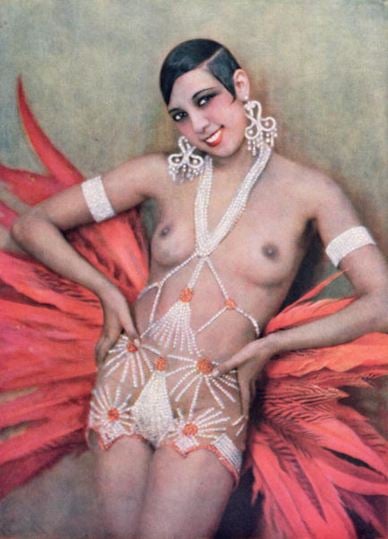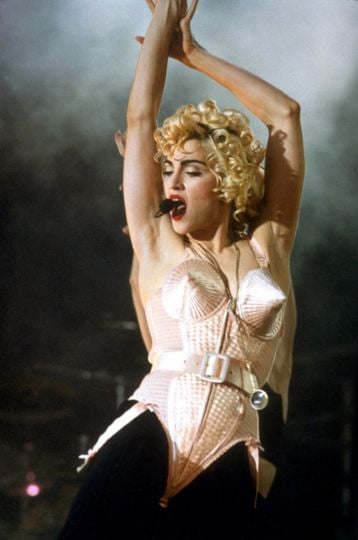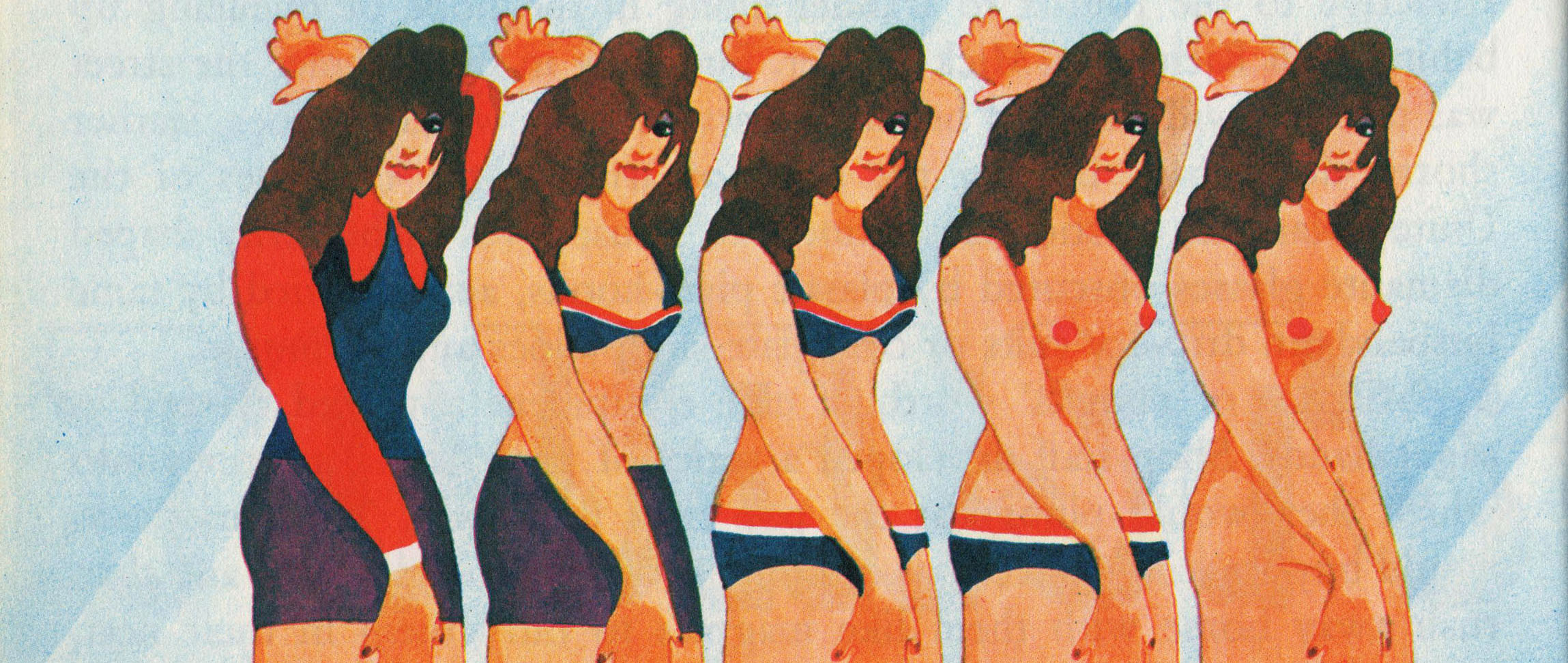
Exposing the History of Underwear
There’s a pants party and you’re invited; the V&A’s much-anticipated exhibition Undressed: A Brief History of Underwear will be revealing all to the public from the 16th April. It will examine the practicalities of various underwear models from the 18th century to the present day and their sexual appeal in fashion, as well as highlighting the occasional controversy sparked in regards to body image, gender and morality.
What better excuse for a quick flash of lingerie and undergarments from the Bridgeman archive?
Bikini
Woman in a ‘bikini’, from the Room of the Ten Dancing Girls (mosaic), Roman, (4th century AD) / Villa Romana del Casale, Piazza Armerina, Sicily, Italy / Bridgeman Images
Actress Marilyn Monroe With A Polka Dot Bikini C. 1954 / Photo © AGIP / Bridgeman Images
The two-piece bikini only emerged due to a fabric shortage after WWII, as the US government ordered a 10% reduction in fabric for women’s swimwear. French engineer Louis Réard introduced the modern bikini in July 5, 1946, borrowing the name for his design from the Bikini Atoll, where post-war testing on the atomic bomb was happening.When womens’ swimsuits first came to prominence in popular culture a century ago, they were considered daring; Australian Annette Kellerman was arrested on a Boston beach for wearing a form-fitting, one-piece knitted swimming costume that covered her from neck to toe (heaven forbid!).
Funnily enough, bikinis have actually been around since antiquity; illustrations of Roman women wearing bikini-like garments during competitive athletic events have been found in several locations. The most famous example is shown above, at the Villa Romana del Casale.
Boxer Shorts
Portrait of Mr Crawford, c.1930 (gelatin silver print), William Oakley / Museum of New Zealand Te Papa Tongarewa, Wellington, New Zeland / F B Butler / Crown Studios Collection. Gift of Frederick B Butler, 1971 / Bridgeman Images
Philippines, swimming trunks drying on a line, seen against sea and mountain backdrop / Dorling Kindersley / UIG / Bridgeman Images
These all-around elastic shorts have been around since 1944, so named after the shorts worn by boxers, for whom unhindered leg movement and footwork is very important.
They are also deemed scientifically more healthy for men to wear than tight jockey-style briefs, which could potentially have damaging effects to a man’s fertility.
Brassiere
The Bliss of Mrs Blossom with Richard Attenborough, 30 May 1967 / Photo © AGIP / Bridgeman Images
The bra, or brassiere if you want to sound fancy, is one of the most common form of undergarment. There are a number of different styles, from the plunge to the balconette, though most come in 36 different sizes.
The term brassiere was first used by the Evening Herald in New York, in 1893. It gained wider acceptance in 1904 when the DeBevoise Company used it in their advertising copy – although the word is actually Norman-French for a child’s undershirt.
It is believed that wearing breast-supporting clothing could date back to ancient Greece, when women wore an apodesmos: a band of wool or linen that was wrapped across the chest and tied at the back.
Camiknickers
Underwear from the Costume Collection: Chiffon camiknickers, 1930’s; and Black lace camiknickers, 1940’s, English School, / Killerton, Devon, UK / National Trust Photographic Library/Andreas von Einsiedel / Bridgeman Images
Pink nylon camiknickers, 1940s; and Christian Dior stockings, from the Killerton Costume Collection, English School / Killerton, Devon, UK / National Trust Photographic Library/Andreas von Einsiedel / Bridgeman Images
This is an all-in-one camisole and knickers combination that may not be the most practical for toilet situations, but at least you never have to worry about matching underwear or dreaded ‘visible panty lines’. Also known as the ‘teddy’, it first appeared in 1910 but lost popularity in the 1940s.
Chemise
Portrait of Ortensia Mancini as Aphrodite, Jacob Ferdinand Voet (1639-1700) / Private Collection / Photo © Christie’s Images / Bridgeman Images
The chemise is likely to have developed from the Roman tunica and first became popular in Europe in the Middle Ages. Women wore it under their gown while men wore it under doublets and robes. It appears as though chemises in art were intended to leave little to the imagination…
It was the only underwear worn until the end of Regency period in the 1820s and was usually the only piece of clothing that was washed regularly.
Codpiece
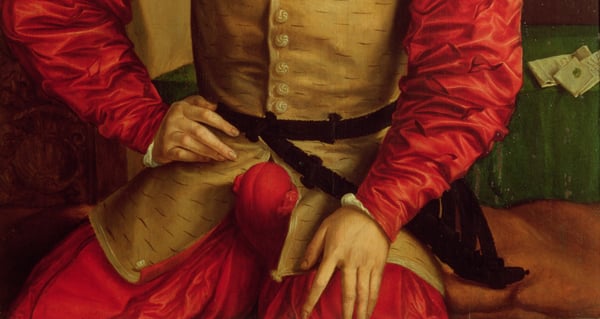
Portrait of a Young Man (detail)/ Georg Pencz / Galleria degli Uffizi, Florence, Italy / Bridgeman Images
A codpiece (which comes from the Middle English ‘cod’, meaning scrotum) is a covering flap or pouch that attaches to the man’s crotch region and, as can be seen with this young gentleman, usually accentuates the genital area.
The first codpiece appeared on the armour of knights of the Middle Ages to preserve modesty, as otherwise the genitalia would simply hang loose under the doublet. It was only many years later, in the era of the Renaissance, when people began using it to show power and sexual prowess. They reached their peak of size and decoration in the 1540s, when they were so large that they were used to carry small weapons or jewels – hence why we sometimes refer to male genitalia as the ‘crown jewels’.
Check out these metal codpieces, for the man who is apparently more worried about the protection of his bits than their comfort.
Corset
Advert for corset ” Thylda ” in France at the time of the 3rd Republic (1870-1914) (detail) / Photo © PVDE / Bridgeman Images
If you’ve seen Titanic, or any period drama for that matter, you’ll have heard about what a pain corsets were to wear. The garment was worn under clothes to hold and train the torso into a desired shape for aesthetic or medical purposes. These days they are associated with sexual fetishism and are fairly common in burlesque shows.
Both men and women used to wear corsets though it was more common with the latter, as it enhanced the bosom while narrowing the waist, to give an hourglass figure. Many physicians believed that tight-lacing corsets led to severe organ displacement as well as other internal damage, as waists shrunk to up to 15 inches!
Knickers
Panties, Sandro Sodano (b.1966) / Private Collection / © Special Photographers Archive / Bridgeman Images
After about 1800 women wore underwear called drawers, knickerbockers or saucy bloomers that came down to below the knee. In the late 19th century the word was shortened to knickers, or panties if you live in the USA .The earliest known use of underwear that resembles modern panties dates back to 4,400 B.C. during the Badari period in Egypt. However, women did not usually wear knickers until the end of the 18th century …everyone went commando.
From granny pants a la Bridget Jones to hipster briefs and then the more risqué thongs and g-strings, nowadays there’s an underwear type for every personality. What’s your favourite?
Showstoppers
Josephine Baker (1906-75), Stanislas Walery (after) / Bridgeman Images
Madonna (wearing Jean-Paul Gaultier clothes) performing during the Blonde Ambition tour 1990 / Bridgeman Images
In modern society, undergarments no longer need to be coyly hidden underneath clothes; singers, dancers and other performers frequently flaunt avant-garde underwear to heighten their sex appeal.
Josephine Baker in particular was not one to shy her body away; she often wore barely-there costumes on stage, such as the glitzy number above and her famous banana outfit.
Madonna‘s cone-shaped bra by designer Jean-Paul Gaultier achieved cult icon status and sold for $52,000 at a Christie’s Pop Culture auction in 2012.
Find out More
Undressed: A Brief History of Underwear will be at the V&A from 16 April – 12 March 2017
Images and Licensing
View all underwear images. Don’t get your knickers in a twist if you need help; contact us at uksales@bridgemanimages.com for research and licensing queries.

